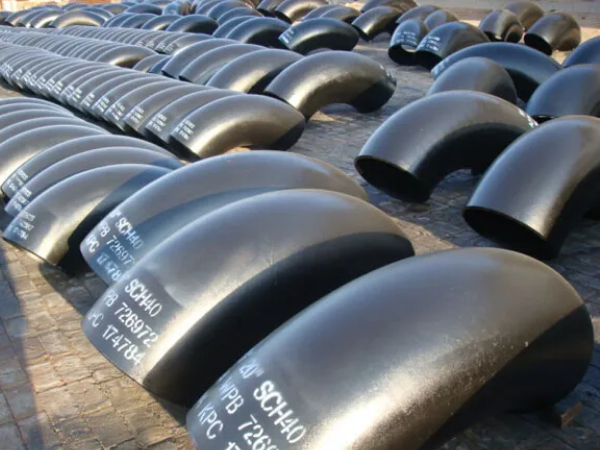Introduction of Forming Process for Pipe Fittings Elbow
Date:2022-03-31View:1473Tags:Pipe Fittings Elbow,Forming Process
In piping systems, elbows are pipe fittings that change the direction of piping. According to the angle, there are three most commonly used ones: 45° 、 90° and 180°. In addition, according to the needs of the project, other abnormal angle elbows such as 60° are also included. The materials of elbows are cast iron, stainless steel, alloy steel, malleable cast iron, carbon steel, non-ferrous metals and plastics.

Commonly used seamless elbow forming processes include hot pushing, stamping, extrusion, etc.
1) Hot push forming
The hot push elbow forming process uses a special elbow push machine, a core mold and a heating device, so that the blank set on the mold moves forward under the push of the push machine, and is heated, expanded and bent during the movement. the process of. The deformation characteristic of the hot push elbow is to determine the diameter of the tube blank according to the law that the volume of the metal material does not change before and after plastic deformation. The diameter of the tube blank used is smaller than the diameter of the elbow. The metal flow is compensated to other parts thinned by the expansion, so as to obtain an elbow with a uniform wall thickness.
2) Stamping and forming
Stamping elbows are divided into cold stamping and hot stamping. Usually, cold stamping or hot stamping is selected according to material properties and equipment capabilities. The forming process of the cold extrusion elbow is to use a special elbow forming machine to put the tube blank into the outer die. Clearance movement to complete the forming process.
The elbow manufactured by the internal and external die cold extrusion process has beautiful appearance, uniform wall thickness and small size deviation. Therefore, this process is mostly used for the forming of stainless steel elbows, especially thin-walled stainless steel elbows. The inner and outer molds used in this process have high precision requirements; the requirements for the wall thickness deviation of the tube blank are also relatively strict.
3) Extrusion molding
The seamless elbow forming also adopts the forming process of extruding the tube blank into the outer die, and then shaping the tube blank through the ball. However, this process is relatively complex, troublesome to operate, and the forming quality is not as good as the previous process, so it is rarely used.

